When Karly and I went to the Round Top antiques fair last month, the most common sentences uttered between us were either, "If only it was a tenth of the price!" or "I just wish it was bigger." At that moment I realized I had developed a severe case of megalomania, although (silly me!) I should have seen it coming a year ago. Sometimes I feel like I'm just stumbling around aimlessly in the world of design, being as I am just a lowly artist type, and it so often happens that I'm a bit slow to catch onto the latest trends. But methinks this one caught me unawares because I mistook it for art. But it's not art. I don't think. Take, for instance, the work of Dutch design duo Studio Job:
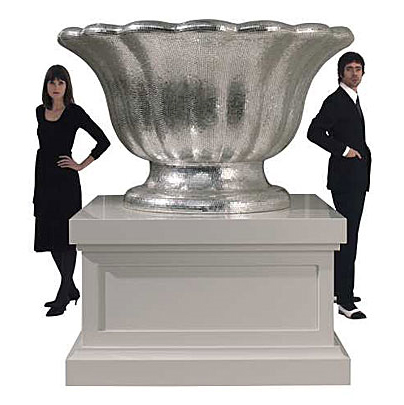
Their dazzling white gold, mosaic-covered, Silver Ware series for Bisazza featured traditional tabletop pieces in monstrous proportions; the teapot alone is six feet tall (photos courtesy of Dezeen and The LA Times).

Yet, only a few years ago, according to the International Herald Tribune:
Studio Job was condemned by Dutch design critics for its disdain for function and for its self-indulgent symbolism. "It was horrible," recalled [co-designer] Smeets. "We were accused of making bad art by the art world, and bad design by the design world." Today they are being lauded, for exactly the same reasons, as the poster boy and girl of the new expressionism in design.
So caught between art and design -- or let's say concept and function -- Studio Job occupies a nether region of functionless and lack of concept, wrapped up in a shiny package with a (very) high price tag.
But what's the difference between Studio Job's giant spoon:
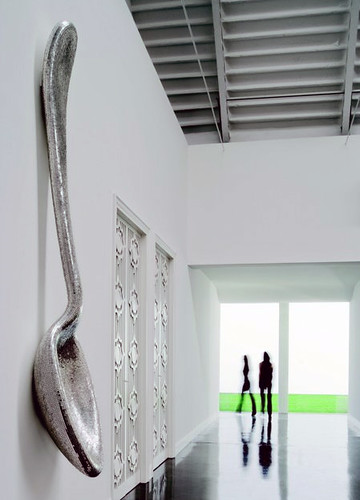
And Claes Oldenburg's giant spoon (photo from Minneapolis Sculpture Garden):
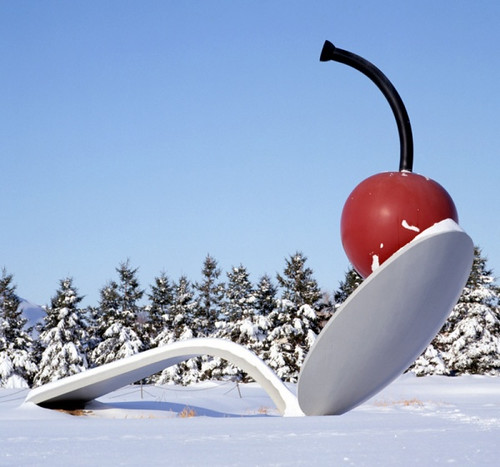
No, I don't think the only difference is the cherry on top, but seriously no one disputes Oldenburg's status as a "real" artist. Is it only because he thought of making things that are usually small really big first? (This sculpture was made in the mid 80's, but he started making gigantical sculptures in the 60's.) And he's certainly not the only artist to make giant sculptures. Take the always colorful artist Jeff Koons, for example (via If It's Hip, It's Here):
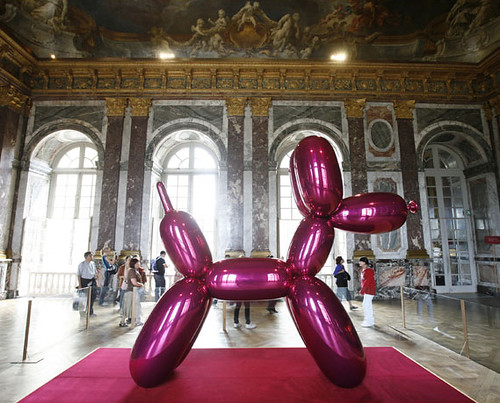
I'm extremely distracted by the gorgeous background, but how is this giant balloon dog different from, say, designer Jaime Hayon's giant creepy doll thing (other than the difference in zeros on the respective price tags. Hint: artist Jeff Koons' is exponentially more expensive):
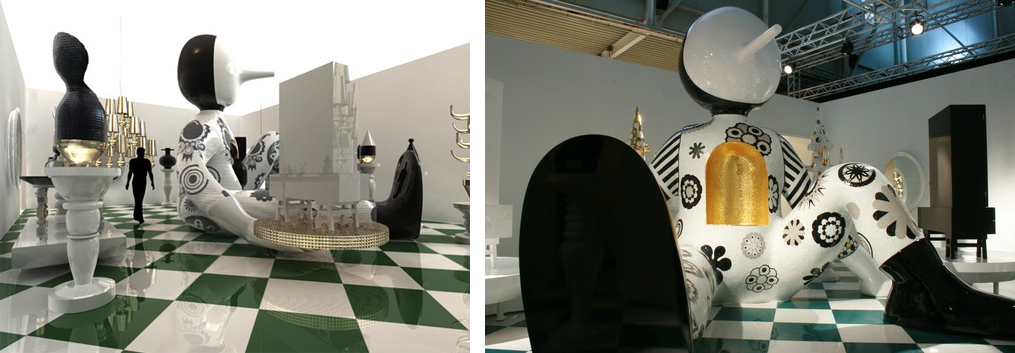
Both sculptures are big and shiny, but could we say that Jeff Koons' includes some kind of cultural critique of society, whereas Jaime Hayon's does not? Maybe. I'd be interested to hear some of you super smart readers argue either side of that point.
What is it about epic proportions on everyday objects that make them so interesting, anyway?
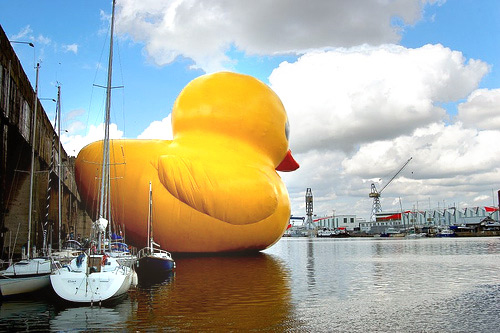
Is there anyone who is not transfixed by this ridiculously ginormous rubber duckie? I didn't think so. And no, it's not photoshopped.
The design world definitely seems to have picked up on the "Bigger is Better" aspect of our culture, because big is REALLY BIG right now.
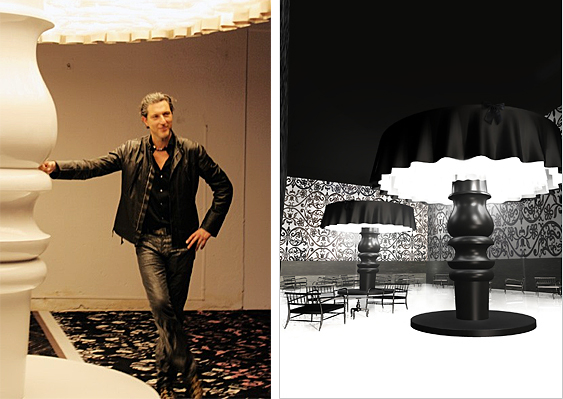
Marcel Wanders certainly looks pleased with his gargantuan "table" lamps. Of course, there's no table in the world they could fit on... except maybe one of the silver "tea platters" by Studio Job, featured near the top of the post.
Perhaps he was just trying to one-up Philipe Starck's design for the Parris Landing Condominiums?
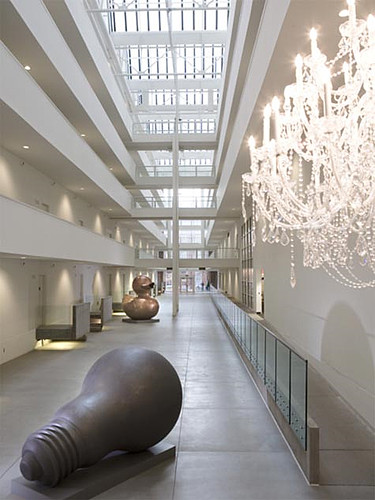
Whatever the case, a relatively scaled down megalomania is wending its way through the homes of middle class consumers everywhere, as evidenced by this popular pad on Apartment Therapy:
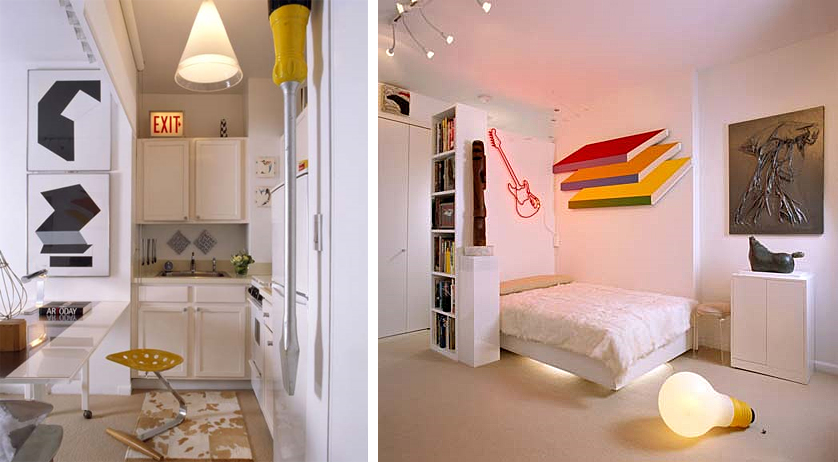
How much do you love that giant screwdriver on the left??? It looks dangerous, which I am quite sure is the appeal for me. And check out the Mini-Me version of Starck's giant light bulb. The surge of supersized objects doesn't end there, though:
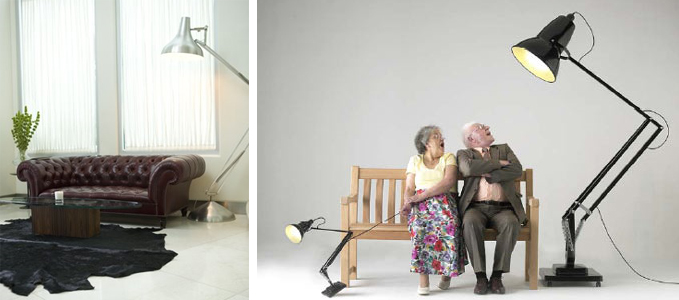
Even the typically refined anglepoise lamp -- designed in the 40's with smaller scaled homes in mind -- has been pumped up by massive steroid injections. Unlike a scintillating six foot tall teapot, this lamp could fit right in to today's McMansions. (photo on left via Desire to Inspire, photo on right via Apartment Therapy)
Another example of Design/Art's (Des'Art?) trickle down economics:
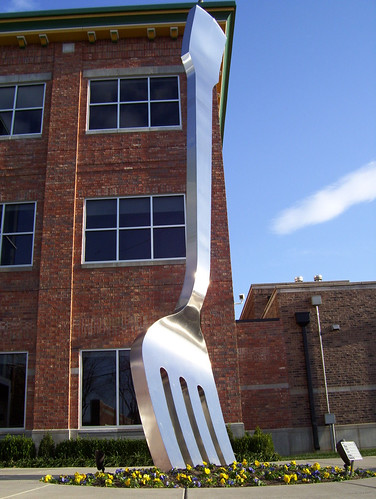
Giant fork sculpture in Missouri via some guy's Myspace evolves into giant fork wallpaper from Anthroplogie (pictures via Apartment Therapy):
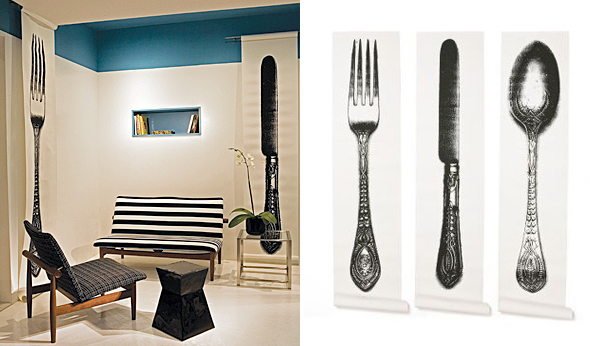
Becomes giant fork in Mads Lauritzen's surrealist photograph. Because improper proportions are surreal.
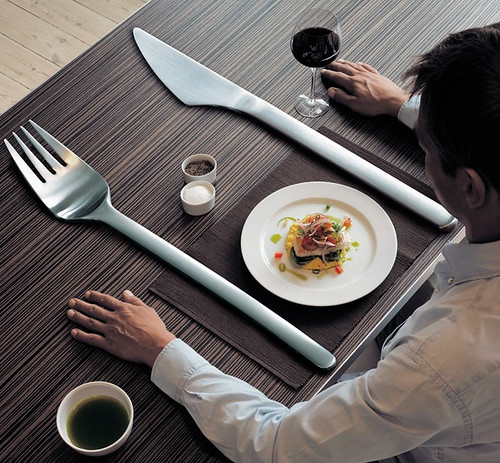
For some reason giant cutlery is really popular right now, and that brings back painful memories of those huge wooden forks and spoons that everyone's Mom had on the kitchen wall. Whatever you do people, please don't go there.
I have to admit that I like some of the more practical supersized designs. There's a big difference between Studio Jobs's giant golden coffeepot dumping a stylized brown river of what I can only hope is coffee:
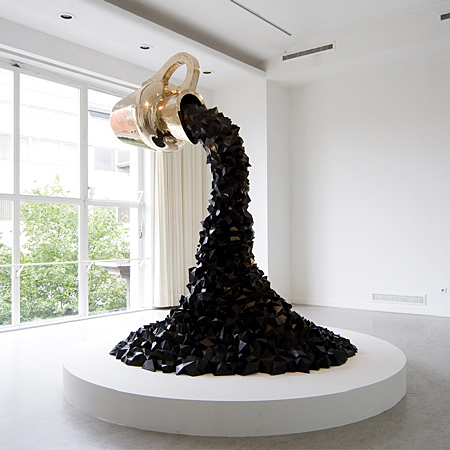
And these nifty giant golden hand chairs seen in the sweetly elfin Jonathan Adler and adorably scathing Simon Doonan's house, which was featured in Met Home:
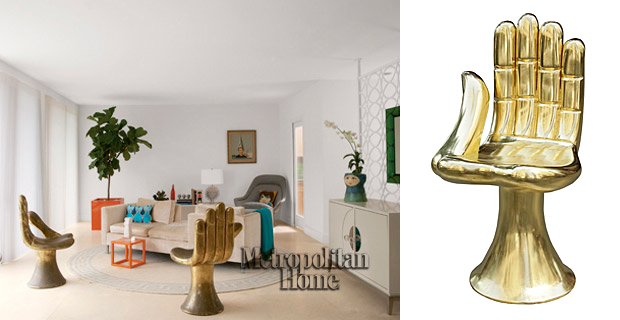
By the way, I'm sure Adler got his chairs from super chic antiques dealer Todd Merrill, but I've seen them in hideous colors for as little as $30 on Craigslist and Ebay. Gold spray paint anyone? Or white, even?
Whew, I'm tired from thinking so much today, and I really hope I haven't worn you out too much to discuss exciting things like: art versus design, or the decline of western civilization, or whether all design will simply grind to a halt in the face of a deepening recession. Is megalomania bound to shrink in direct proportion to our shrinking economy?
In case the real question you want to answer is, "Why do I have to read this crap? I'm not in school anymore," I have a present for you:

It's a super cute, supersized bunny! And if you like it, you won't click on this link to find out what happened to it.